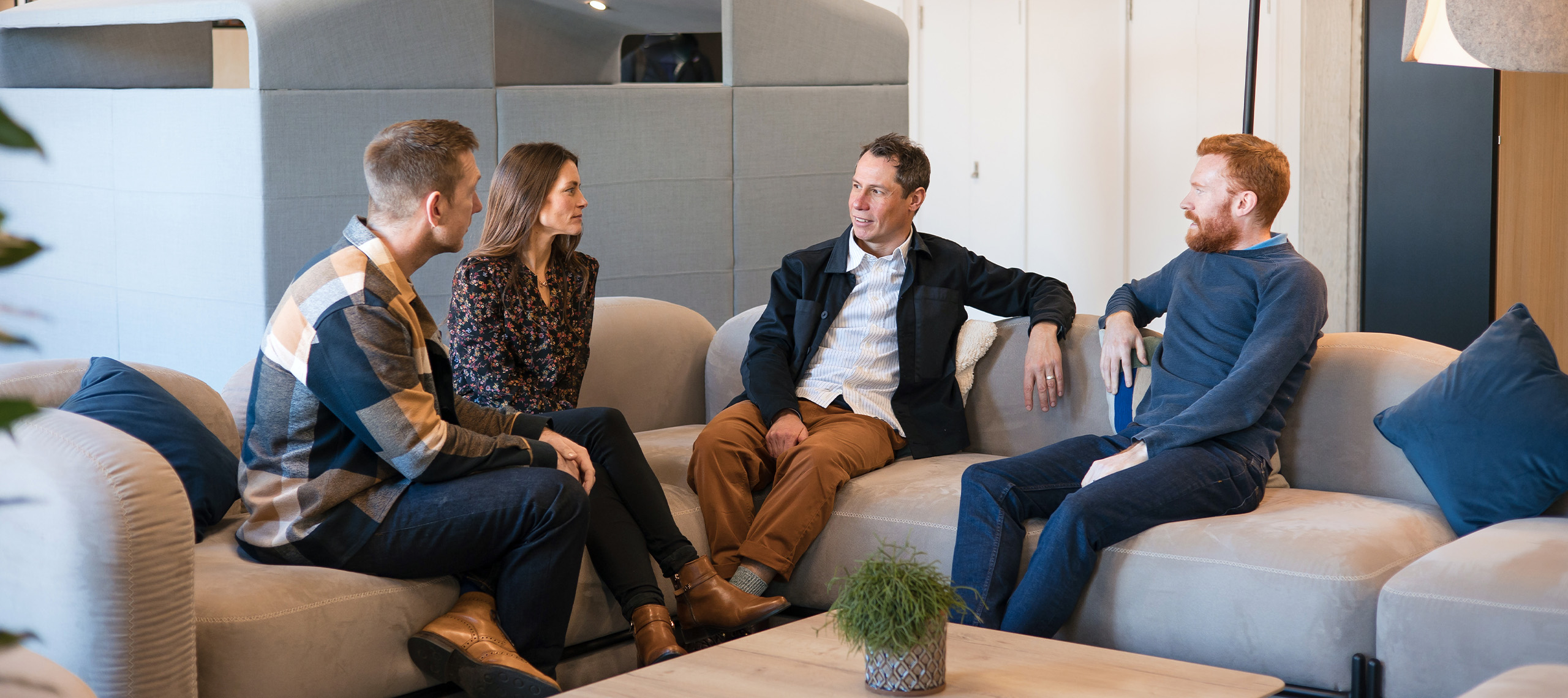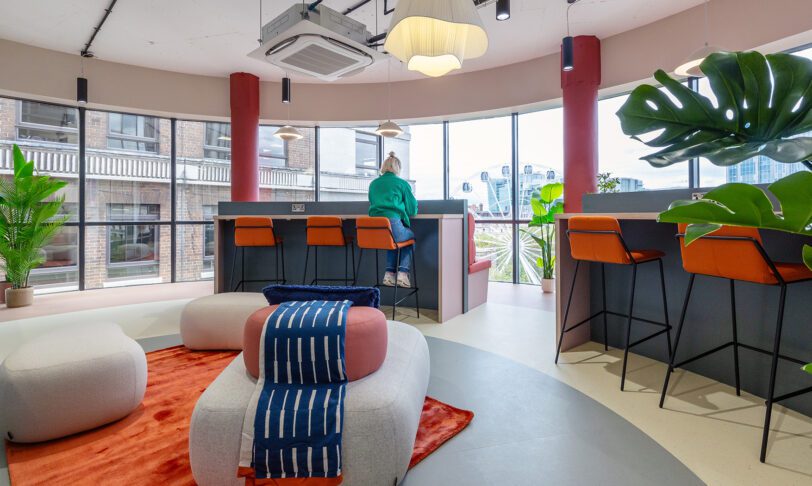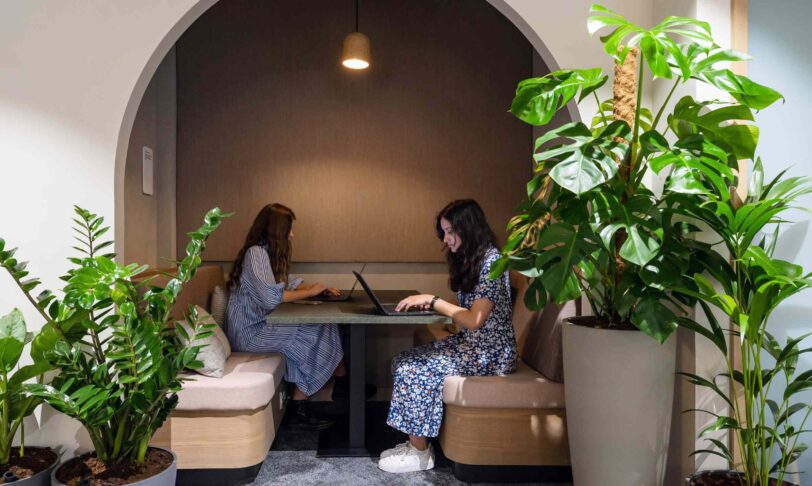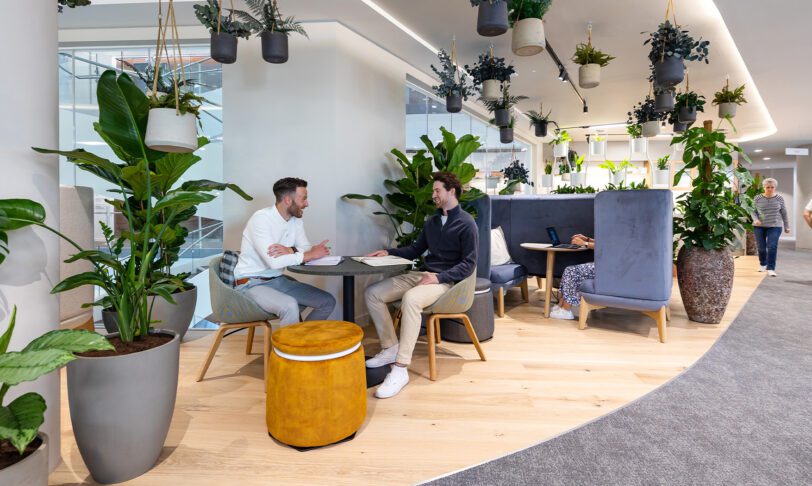Workplace Experience: what is it and why is it important?
What is workspace experience?
Workplace experience refers to how an employee interacts with their work environment. There are three main components of workplace experience: space, technology and people, all of which impact how people are able to do their job. A holistic approach to workplace experience considers all three components and ensures they are working together to drive better business outcomes and happier employees.
Space
This refers to the physical area an employee works in. It includes office layout and design, choice of workspace and, for hybrid or remote workers, the home work area – whether that’s an office, kitchen table or pile of books balanced on a bed. With 83% of workers now preferring to work in a hybrid model, the experience of the physical workplace has become unpredictable as people are no longer in the office 9 to 5, 5 days a week. Employers may need to consider how they design their hybrid workspace including considering hot-desking and desk booking systems to ensure everyone has a desk no matter what day they’re in the office.
That’s not to mention all the other design features that make an office appealing to workers – temperature (no wants to sit in a freezing cold office), comfortable lighting and facilities such as kitchens, bathrooms and showers.
Technology
A digital employee experience refers to the quality of the hardware, systems and technology an employee may use in their job. It includes the performance and reliability of devices and programs and whether the systems promote mobility and collaboration. A study by Ivanti found that 64% of employees find their morale impacted by workplace technology – so it’s never been more important to get the tech right. Slow networks, a lack of second screens, or simply not knowing how to use the latest video conferencing program all contribute to a decreased workplace experience.
Whilst there is no ‘one size fits all’ for a company’s technology, employers and IT teams must work together to ensure a frictionless tech experience, from properly onboarding new starters with the technology and systems, to having readily available IT support and resources. Easy-to-use integrated systems will also help improve communication and collaboration, whether that’s a workplace messaging app, or a meeting room booking system.
People
Perhaps the hardest component to define, your culture and how your people interact with each other can have a huge impact on workplace experience. A strong company culture has been linked to 6.9 times more success for companies – a positive work culture helps create a sense of belonging and motivation, whilst a negative culture may lead to disengagement and higher turnover. Here at Interaction, we’re experts in company culture, and regularly have non-work activities such as a weekly free bar night, ‘beyond the bar’ activities including climbing and bowling, and our annual AGM weekend away. Regular social activities encourage improved relationships between employees which leads to more supportive, collaborative and ultimately, productive offices.
The quality of leadership in a business can also have a significant impact on workplace experience. Good leaders will be approachable, and provide clear direction, support and recognition to their employees. It is also important employees feel able to develop their skills and career within the company, facilitated by good managers and leaders.
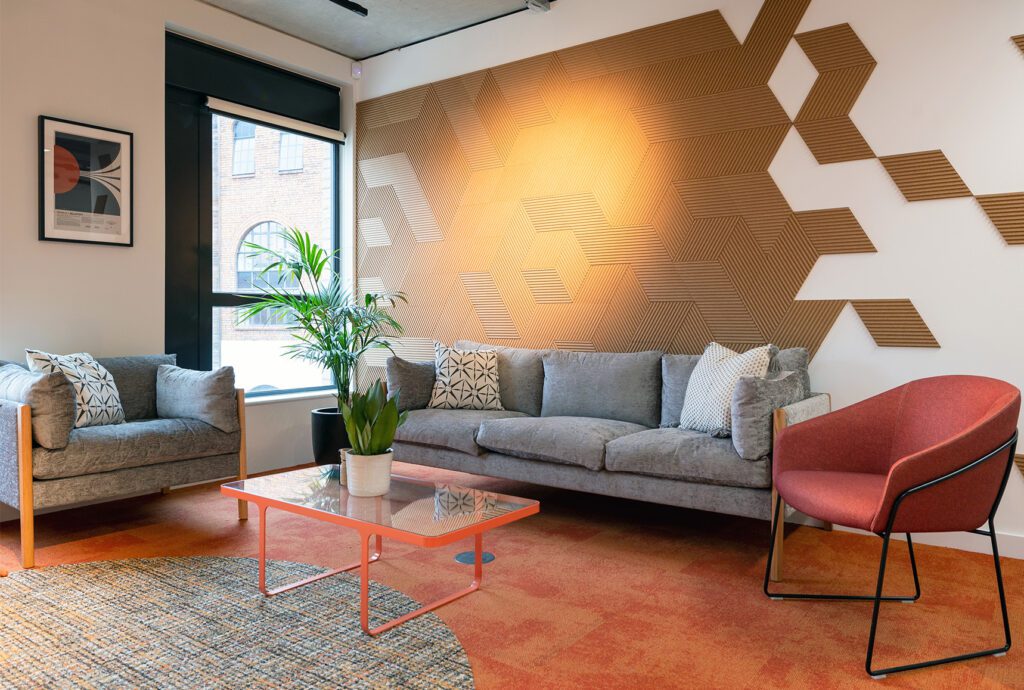
Why is experience so important in the workplace?
A positive workplace experience that considers all three components holistically, can lead to a marked improvement in many areas of business. Frictionless tech and offering a variety of workspaces will help increase productivity, whilst improved culture and social relationships will enhance job satisfaction. There’s even data to back it up – a 2022 survey by Gallup shows that companies which put employee experience at the forefront have a 17% improvement in productivity, 41% decrease in absenteeism and 21% increase in profitability. It’s hard to ignore numbers like that.
Creating a positive workplace experience is also key to talent acquisition. Have you ever read reviews on a website like Glassdoor? You may have seen ones that lambast a company’s toxic environment, bad leadership and lack of culture – no one wants to apply for a job after reading that. Instead, creating a reputation for prioritising and investing in employee experience will attract (and more importantly retain!) the best talent.
Creating a workplace experience strategy
A workplace strategy is a thought-out approach that helps align your workspace and processes in a way that makes your company thrive. Every workplace has different values and aims, but it’s important that your work culture is supported by the tools, physical office environment, and policies outlined in a workplace strategy. A well considered workplace strategy can help improve workplace experience in a number of ways:
Benefits for employees
- Being supported in their individual way of working
- More freedom of choice and autonomy over their work
- A better sense of community and belonging
- Improved metal and physical wellbeing at work
- Increased support and flexibility
Workplace strategy benefits for your business
- Enhanced employee satisfaction
- An uptick in profitability
- Built-in flexibility that prepares a business for change
- Reduce operating expenditure
- Attract the best talent and retain employees
ESG: A guide for ambitious businesses [PDF Download]
Business owners, landlords and property developers can Unlock the benefits of ESG to attract the best talent, build the best culture and have a positive effect.
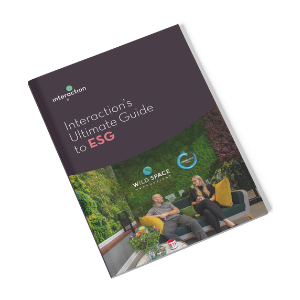
How to measure workplace experience
There is no definitive approach to measuring workplace experience and it can vary depending on a company’s goals and resources. Employee experience is intricate, evolving through many different interactions over time, so for a meaningful understanding of workplace experience, employing a comprehensive system of metrics and tools is preferable to relying on just one or two.
Metrics and benchmarks for measuring workplace experience
Jacob Morgan, the author of The Employee Experience Advantage, suggests using a 17 metric model to measure workplace experience over all three components. This model is a good starting point for any employer wishing to start measuring their workplace experience. He suggests measuring:
Place
- Does the workplace have varied spaces for different types of work?
- Does the workspace reflect company values?
Technology
- Is the tech ‘consumer grade’ (aka something you’d choose in your personal life)?
- Is the technology readily available to everyone?
- Are the systems designed with the employee in mind?
People
- Are the company values reflected in the work?
- Does the company invest in employees’ physical and mental health?
- How diverse and inclusive is the business?
- Are there opportunities for development and progression?
- Do employees feel valued?
- Would an employee refer a friend to work at their company?
Tools for evaluating workplace experience
So now you know what to ask, but how do you go about answering the questions? Speaking directly to employees is key when measuring workplace experience metrics. This can be done in a variety of ways:
- Gathering real-time feedback from employees with pulse and eNPS surveys (employer net promoter score), open feedback platforms and engagement surveys.
- Carrying out regular performance reviews throughout an employee’s time with the business, such as during onboarding, after six months, and at the one-year mark.
- Conducting exit interviews.
This data can then be used to understand how employees are reacting to the experiences of the workspace, technology and the people around them.
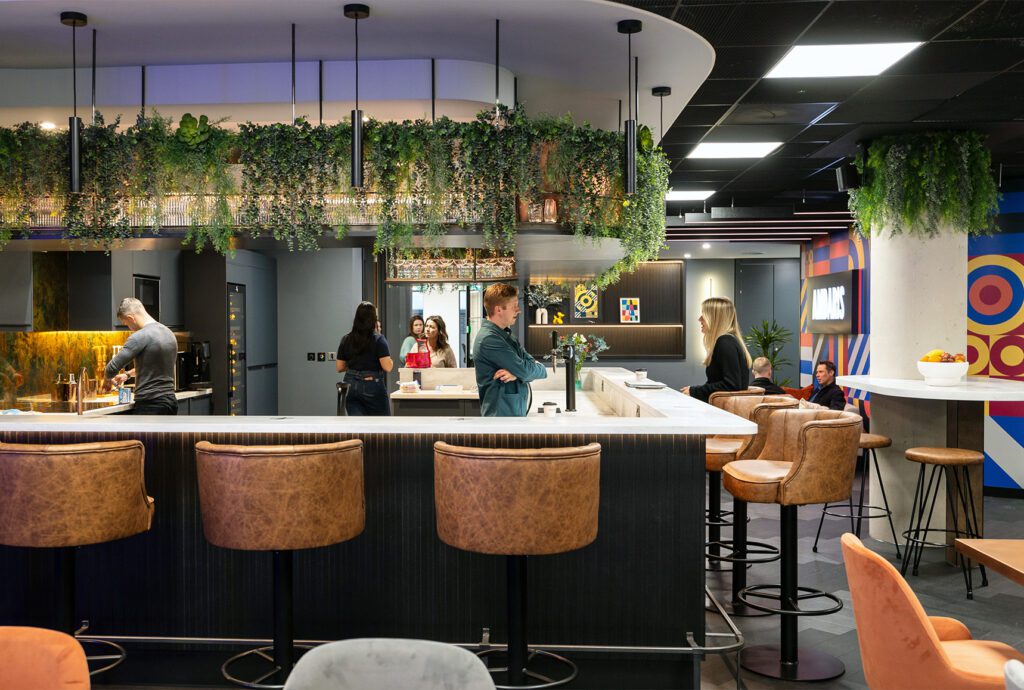
Tips for improving workplace experience
After gaining feedback from your employees and understanding where your workplace experience may need improving or strengthening, here are some of our favourite tips for improving based on the collected data:
Create a destination office
Here at Interaction, we’re passionate about designing offices that people want to work in – after all, 45% of remote workers say they would return to the office at least one day a week if the workplace offer improved.
A desk and monitor are no longer enough to encourage people to tackle an early morning commute or risk their work/life balance, and with a well designed office improving productivity and employee experience it really is a no-brainer to improve the office space. These are some ways to consider turning your workplace into a destination office:
Space management
Creating flexible workstations will help employees have an improved experience when they’re onsite. Having a variety of work areas including 1-2-1 pods, phone booths and focus desks will help people get in the zone for deep, concentrated work. Combine these areas with larger desk areas, collaboration spaces and meeting rooms to allow employees to chat, share ideas and work in a more social area when they feel like it. In our Interaction office, we have a ‘no desks two days in a row’ policy, which encourages staff to move around the office and work where suits them best each day, as well as reducing sioloing. Offering your employees the choice of where and how they want to work in the office will help you create the best workplace experience and keep folks happy and productive when on-site.
Prioritise wellbeing
Prioritise wellbeing spaces – whether that’s a comfortable space for a minute away from the hustle and bustle of the office, a prayer room, or active travel facilities like bike storage and showers that allow staff to combine their daily exercise with their commute. It can even be as simple as making sure your toilets and facilities are clean, well-lit and accessible.
Upgrade the kitchen
A dirty office microwave and barely working kettle no longer cut it when employees have the choice to have lunch in their home kitchens. Instead, think about making your office kitchen the centre of your workspace culture. Keeping it clean and well-stocked with snacks or good coffee will encourage staff to use it and enjoy sitting down to lunch together. According to Linkedin, 55% of employees felt more appreciated by their companies when they provided food for employees, and while providing snacks or occasionally buying lunch for your staff isn’t the be-all and end-all of workplace experience, it can certainly help.
Company events
Company events provide a tonne of advantages for your company. Not only do they contribute to the development of your culture, but also serve as an uncomplicated way to bring people together. 79% of employees see company events as a great way to build meaningful relationships with colleagues whether that’s at a professional gatherings, such as a company-wide all-hands meeting, or personal celebrations – think employee birthdays or baby showers. Planning a variety of workplace events will help enhance employee engagement as well as providing an opportunity for individuals to reconnect, meet new co-workers, and engage with their physical workspace. At Interaction, weekly face-to-face touchpoints encourage people into the office: smoothies on Mondays, internal learning sessions on Wednesdays, and free Friday bar nights.
Chat with Charlie
Get in touch with Charlie, our Relationships Manager to discuss how we could revolutionise your space.
Email: [email protected]
All general enquiries
Phone: 01225 485 600
Email: [email protected]
Or sign up for our newsletter here

Easy feedback
Implementing a workspace experience feedback platform will help find and resolve any issues or snags before they turn into bigger complaints. This could take many forms – maybe a ticket channel to report technology faults, or a confidential HR drop-in. Easy, streamlined feedback channels to feedback and resolve issues quickly will ensure there is consistent learning and developments in the workplace experience.
Regular feedback will help keep employee experience improvements data-driven and iterative and ensure your workplace experience strategy stays on track regardless of external factors.
Appoint a workplace experience manager
Think about hiring a workplace experience manager whose main responsibility is improving the employee experience, allowing a holistic approach that covers space, people and technology. Employee experience managers can help encourage collaboration across departments, motivate employees, and celebrate innovation – all of which not only improve employee satisfaction but will lead to the all important uptick in profit.
Customise the office fit-out
Embracing a ‘people-focused’ office design will impact the workplace experience in a big way. Every company’s culture and values are different, and by tailoring your office fit-out to your business you’ll create a meaningful workplace that ticks all your boxes.
The days of cubicles and grey walls are certainly over, and employees and new talent are expecting more and more from their office. Having a variety of work areas, soft seating, plants and improved kitchens are all ways to make an office feel more people-focused, which will in turn improve workplace experience.
Interaction office fit-outs carefully consider colours, branding, artwork and signage, allowing us to create an environment that resonates with your business and creates an inspiring work environment. When possible, we conduct employee surveys and workshops to cultivate a sense of ownership and engagement. This approach not only involves employees in the design and planning process but also serves as a compelling way to encourage them back to the office by ensuring the workspace is designed with their preferences in mind.
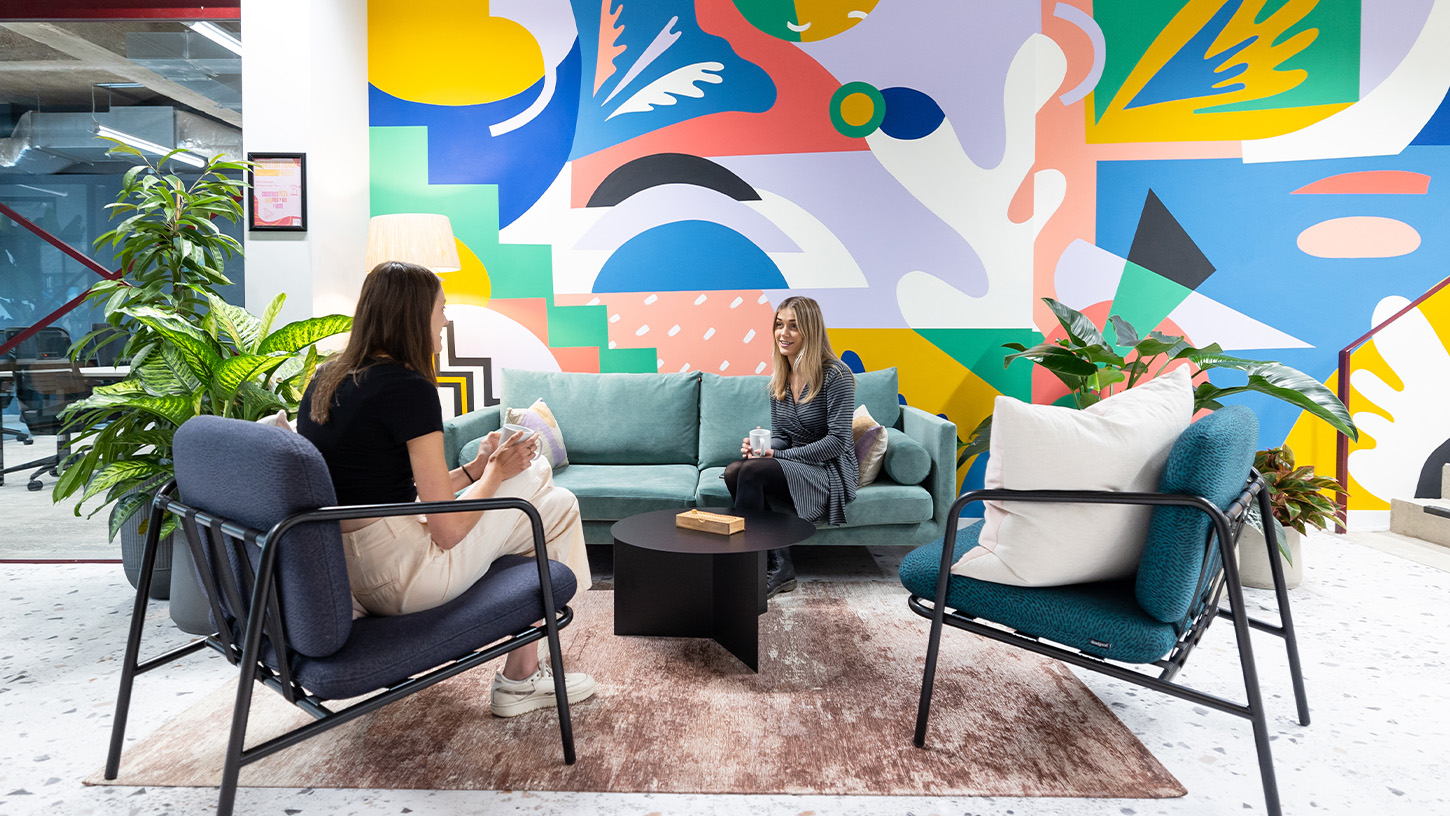
If you’re inspired to improve the workplace experience of your office, get in touch at 01225 485 600 or why not schedule a chat with Charlie. Our office fit-out company has been creating some of the UK’s best workspaces for over thirty years, so we’re happy to help with all your workplace experience needs.
